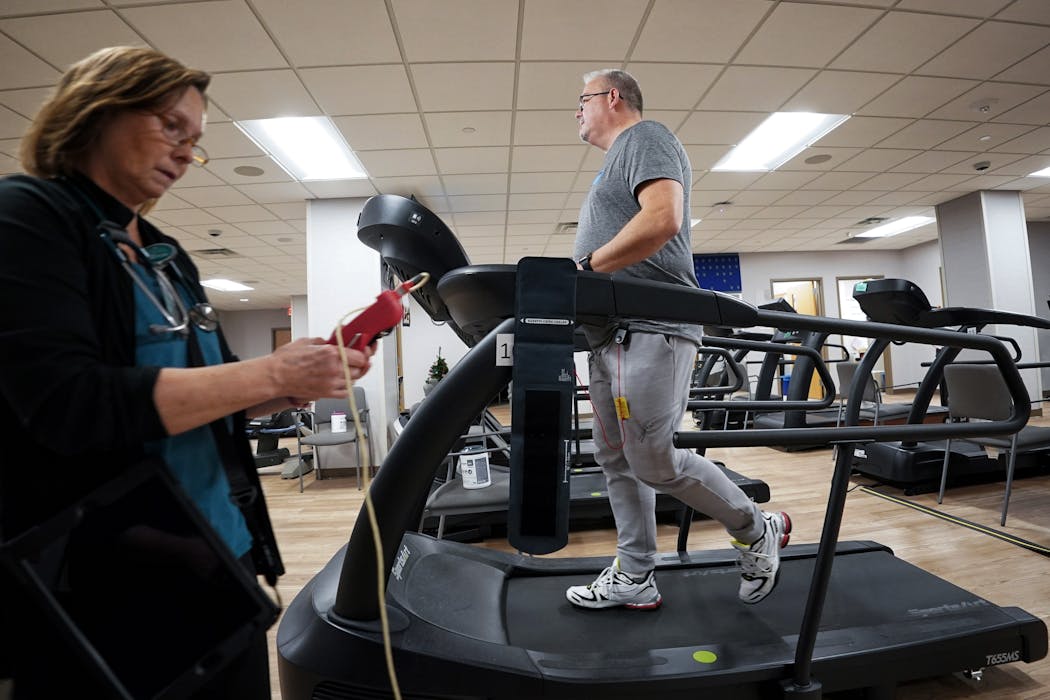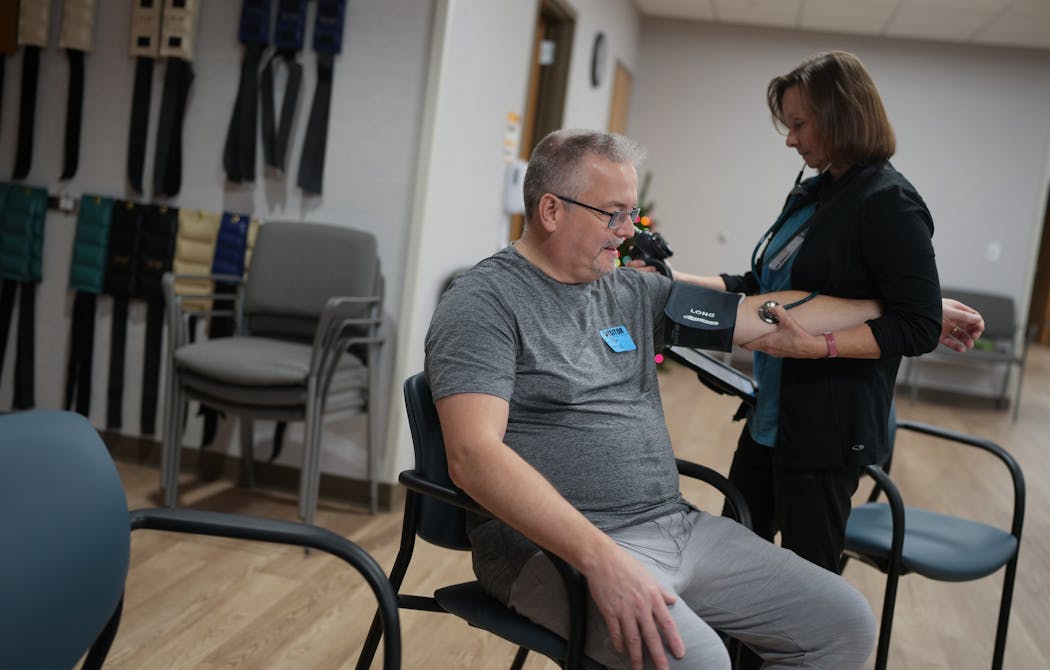Most Minnesotans who survive heart attacks or other cardiac episodes are skipping rehab, despite its benefits in boosting recovery and reducing mortality.
The Minnesota Department of Health promoted this finding earlier this month to improve on the state's 48% participation rate in cardiac rehabilitation after hospitalization. While the national rate is less than 25%, the goal is 70% and Minnesota won't reach it unless it convinces thousands more people to sign up after heart attacks, heart surgeries and other cardiac events.
"It has a powerful impact on qualify of life and length of life for individuals," said James Peacock, a coauthor and supervisor of the state Health Department's cardiovascular disease unit. "We want to showcase this."
Rehab typically involves one to three sessions per week of fitness and strength training, which are scheduled in groups to reduce costs and increase camaraderie and support. Many programs also offer counseling on diet, depression and other consequences of cardiac events.
Unlike many problems in health care, the lack of participation in cardiac rehab isn't caused by a lack of access. All but eight counties in Minnesota have outpatient cardiac rehab programs. Health plans also routinely cover up to 36 rehab sessions, although the cost of repeated copays can be a disincentive.
State leaders urged hospitals to do a better job offering rehab when cardiac patients are discharged, and following up with those patients even if their doctors are affiliated with competing health systems.
Some patients decline because they think they can recover on their own, while others are scared or struggling with depression, said Aaron Pergolski, who directs M Health Fairview's cardiac and pulmonary rehabilitation programs.
"They think we're going to force them to run on treadmills and do things that they have never done before," said Pergolski, a coauthor of the state report.
Exercises are tailored to patients' rehab goals, whether they want to play hockey again or just climb stairs without exhaustion, he said.
One memorable patient was being pressured by relatives to move into an assisted living facility after her cardiac event, Pergolski recalled. "She got up to 8-pound weights so she could lift her garbage and bring it down to the street. That was her goal and she achieved it. Her family was happy because she could still live independently, and she was super happy because her family was off her back."
The Minnesota study analyzed the state's vast "all-payer" database of public and private insurance claims for 2017 and 2018. Race and ethnicity information wasn't collected, so researchers couldn't check for disparities based on those demographics. However, they found that heart attack patients were less interested in rehab than surgery patients, and that women were less likely to participate than men.
Many programs offer only weekday sessions, which can make the time commitment difficult, Pergolski said, especially for women who feel pressure after cardiac events to return to family caregiving roles.
Josh Verhelst is in the demographic most likely to participate — a 43-year-old recovering from a heart attack and surgery to implant a pump that boosts blood flow. The Woodbury man wanted to be able to go on runs with his daughter again and coach his son's football and basketball teams.
Rehab was frustrating at first, because Verhelst was being bested by older patients who were further along in their progress, he said. "You ask the questions like, 'How did I get here? Am I going to get any better?' And then you slowly start to progress."
Verhelst said he benefitted from the flexibility of owning his own IT business and setting his hours, and he surpassed his strength and fitness goals in 20 sessions. He graduated Wednesday and brought cupcakes for his trainers.
"I was barely able to walk up a hill or even stairs in my house," he said. "Now, I'm able to do all of that."
Avoidance by other patients is frustrating for state leaders because the evidence of rehab's benefits is strong. One 2020 study showed that cardiac patients who completed rehab had a 32% lower risk of death from any cause about five years later than those who skipped it.
Health systems don't get paid much for rehab, but they have financial incentives because it prevents cardiac patients from returning to hospitals, Peacock said. The federal government reduces Medicare payments to hospitals if they have excessive readmissions.
Mayo Clinic in Rochester used its vast epidemiology database for Olmsted County a decade ago and was among the first to prove that rehab could reduce readmissions.
Cardiac rehab in Princeton, Minn., helped Paul Leonard, 62, recover from emergency quadruple heart bypass surgery in 2018. Now Leonard volunteers to help others, visiting cardiac patients in hospitals to show that recovery is possible.
"I can't give medical advice," he said, "but I can talk about the patient journey going forward."



